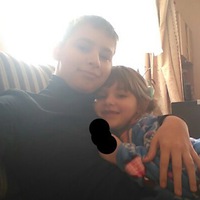
H₂ + Cl₂ = H2PO4 + MgO = CaCl, + K PO. = Zn + O2 = Ca + N = Ca + HCI = Mg + CuCl2 = Zn + FeCl2 =
HNO3 + Ca(OH)2 = Al + S = F, + KBr = Fe (SO2)2 + NaOH = 0
0
 0
0
Ответы на вопрос
 Внимание! Ответы на вопросы дают живые люди. Они могут содержать ошибочную информацию, заблуждения, а также ответы могут быть сгенерированы нейросетями. Будьте внимательны. Если вы уверены, что ответ неверный, нажмите кнопку "Пожаловаться" под ответом.
Внимание! Ответы на вопросы дают живые люди. Они могут содержать ошибочную информацию, заблуждения, а также ответы могут быть сгенерированы нейросетями. Будьте внимательны. Если вы уверены, что ответ неверный, нажмите кнопку "Пожаловаться" под ответом.

Ответ:
Объяснение:
H2 + Cl2 = 2HCl
2H3PO4 + 3MgO = Mg3(PO4)2 + 3H2O
3CaCl2 + 2K3PO4 = Ca3(PO4)2 +6 KCl
2Zn + O2 = 2ZnO
3Ca + N2 = Ca3N2
Ca + 2HCl = CaCl2 + H2
Mg + CuCl2 = MgCl2 + Cu
Zn + FeCl2 = ZnCl2 + Fe
2HNO3 + Ca(OH)2 = Ca(NO3)2 + 2H2O
2Al + 3S = Al2S3
F2+ 2KBr = 2KF + Br2
Fe2(SO4)3 + 6NaOH =2 Fe(OH)3+ 3Na2SO4
 0
0
 0
0

It seems like you're trying to write chemical equations, but the equations you've provided are incomplete or incorrect. Chemical equations need to be properly balanced and written in a way that reflects the actual reactions taking place.
Let's go through each of the equations you've provided and try to correct them:
H₂ + Cl₂: This is the combination of hydrogen and chlorine to form HCl. The balanced equation is 2H₂ + Cl₂ → 4HCl.
H2PO4 + MgO: These compounds do not react in a simple way. You need to provide more context or information about the reaction you have in mind.
CaCl, + K PO: I'm not sure what "CaCl," and "K PO" represent. It seems there may be a typo or misunderstanding.
Zn + O2: This represents the oxidation of zinc. The balanced equation is 2Zn + O2 → 2ZnO.
Ca + N: Calcium and nitrogen do not typically react under standard conditions. You need to provide more context or information.
Ca + HCl: Calcium reacts with hydrochloric acid to produce calcium chloride and hydrogen gas. The balanced equation is Ca + 2HCl → CaCl₂ + H₂.
Mg + CuCl2: Magnesium reacts with copper(II) chloride to form magnesium chloride and copper. The balanced equation is Mg + CuCl₂ → MgCl₂ + Cu.
Zn + FeCl2: Zinc reacts with iron(II) chloride to form zinc chloride and iron. The balanced equation is Zn + FeCl₂ → ZnCl₂ + Fe.
HNO3 + Ca(OH)2: Nitric acid reacts with calcium hydroxide to produce calcium nitrate and water. The balanced equation is 2HNO₃ + Ca(OH)₂ → Ca(NO₃)₂ + 2H₂O.
Al + S: Aluminum reacts with sulfur to form aluminum sulfide. The balanced equation is 2Al + 3S → Al₂S₃.
F, + KBr: It appears you have written "F," which is not a typical chemical symbol. Fluorine (F₂) can react with potassium bromide (KBr) to form potassium fluoride and bromine gas. The balanced equation is F₂ + 2KBr → 2KF + Br₂.
Fe (SO2)2 + NaOH: The compound "Fe(SO2)2" is not a known chemical compound. Please provide more information or a correct chemical formula.
If you have specific reactions in mind or need further clarification, please provide more information or context, and I'd be happy to help you with balanced chemical equations.
 0
0
 0
0
Похожие вопросы
Топ вопросов за вчера в категории Химия
Последние заданные вопросы в категории Химия
-
Математика
-
Литература
-
Алгебра
-
Русский язык
-
Геометрия
-
Английский язык
-
Химия
-
Физика
-
Биология
-
Другие предметы
-
История
-
Обществознание
-
Окружающий мир
-
География
-
Українська мова
-
Информатика
-
Українська література
-
Қазақ тiлi
-
Экономика
-
Музыка
-
Право
-
Беларуская мова
-
Французский язык
-
Немецкий язык
-
МХК
-
ОБЖ
-
Психология
-
Физкультура и спорт
-
Астрономия
-
Кыргыз тили
-
Оʻzbek tili

























